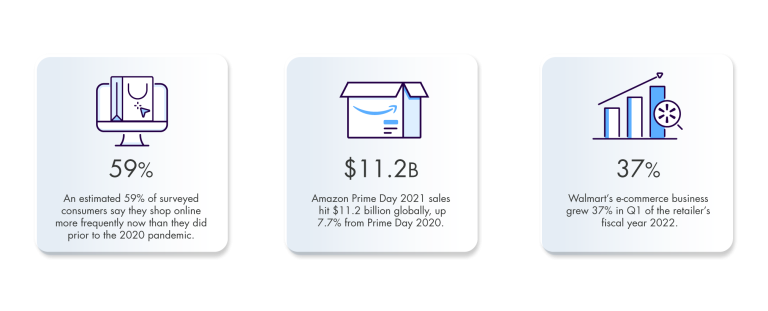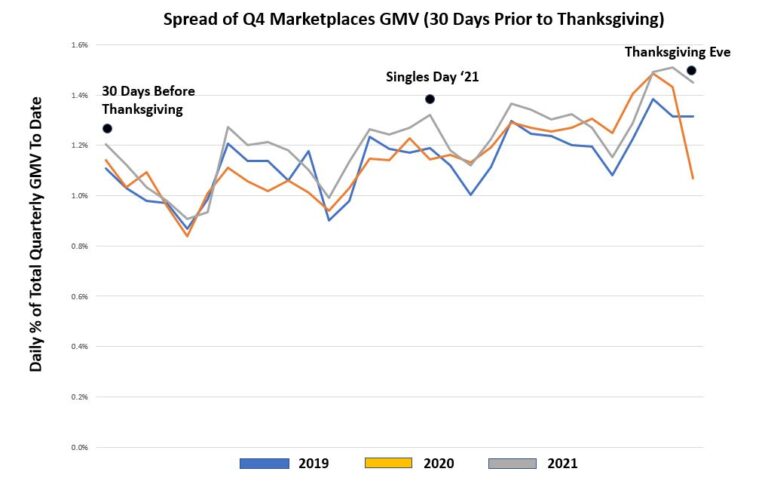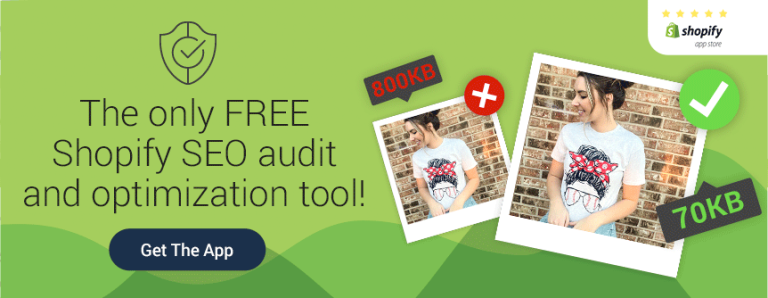Launching an online store is a tempting prospect – financial freedom, independence, doing something you love, to name a few!
But, at the same time, there are plenty of challenges to scare you off, most notably, parting with a risky and significant upfront cost to purchase inventory and warehousing space. So, if that’s what’s standing between you and your entrepreneurial dreams, dropshipping might be the solution.
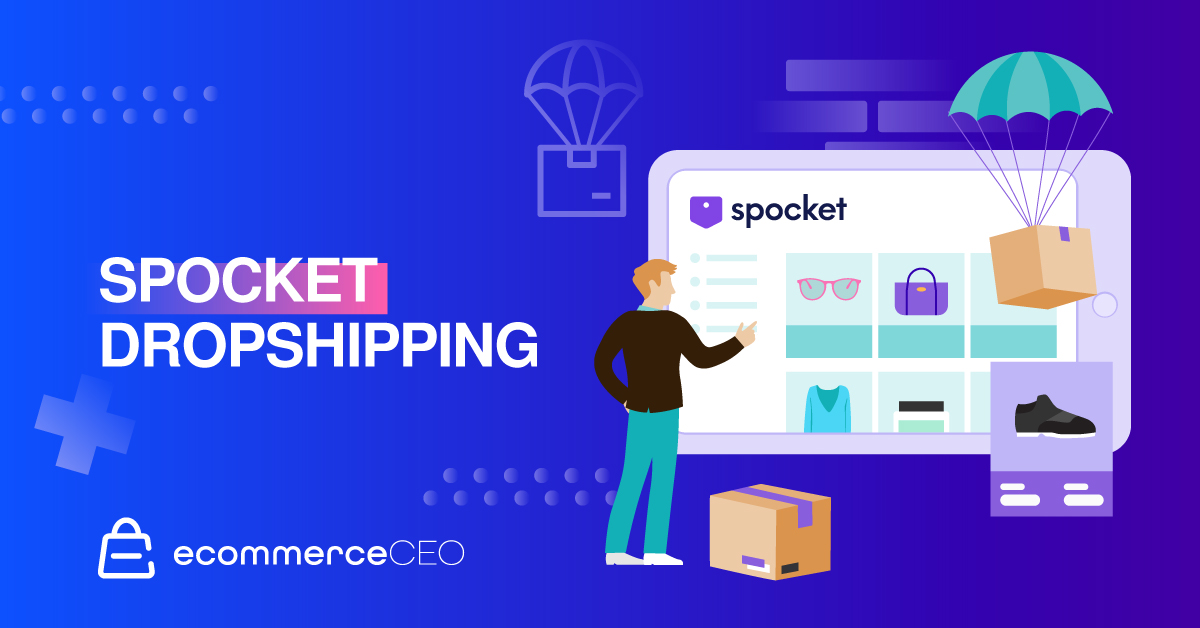
Dropshipping is a popular ecommerce business model. In 2020, Statista published the market’s estimated value for dropshipping ecommerce was at 128.6 billion US dollars throughout the world. Considering how dropshipping drastically reduces the cost of funding your online business and how easy scaling your brand is, this comes as no surprise.
If that sounds good to you, you’re in the right place. This guide covers how to get started with Spocket dropshipping – one of the world’s most popular dropshipping supplier platforms.
Let’s dive into this Spocket tutorial!
What’s Dropshipping (And Why Should You Care?)
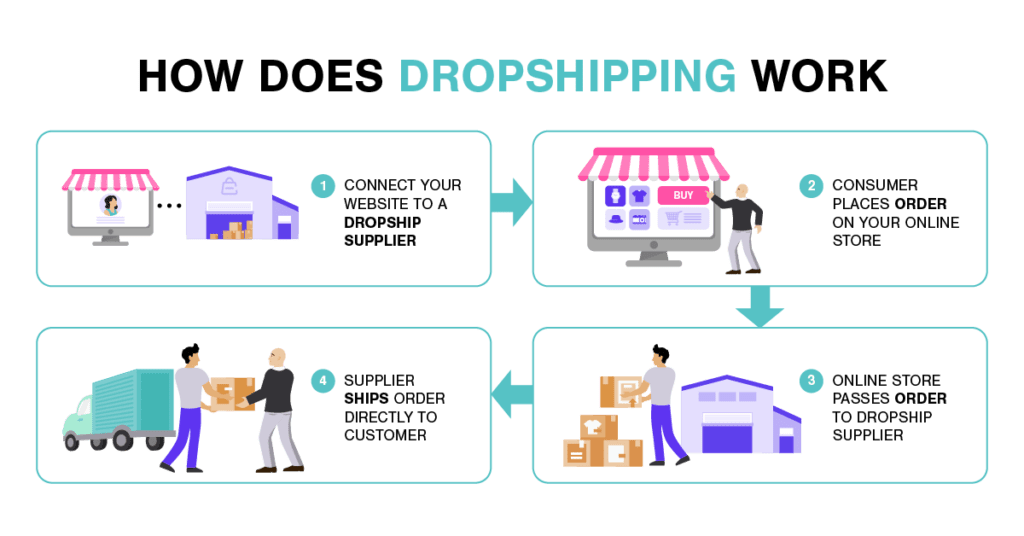
As we hinted at in the intro, dropshipping is an ecommerce business model. Here the online retailer works with a third-party supplier who provides and stores products. When a customer places an order with your store, it’s passed to the suppliers for fulfillment.
Thanks to this “middle person,” ecommerce store owners don’t have to stock up on inventory themselves or worry about packaging or shipping orders. Say goodbye to traditional businesses where you have to purchase merchandise with a minimum order and grow your business without the hassle of having to handle inventory.
How Does This Work in Terms of Profits?
When you opt to sell an item from dropshipping suppliers via your ecommerce store, you white label the product as your own and set a price.
Typically this price needs to include three things:
The supplier’s baseline cost for the item + the supplier’s shipping costs + your profit margin
For example, let’s say you added a supplier’s coffee mug to your product offering. The supplier’s base price might be $5 (for ease, let’s say this cost includes shipping). You could then set the price for the mug in your store at $9. So in this instance, you would make a $4 profit. Make sense?
The Pros and Cons of Dropshipping
With everything we’ve just said in mind, the perks of dropshipping are plain:
- The upfront investments traditionally needed to launch a dropshipping business are lower because you don’t have to buy and stock your own inventory.
- Experimenting with new products isn’t as risky because you can quickly dabble in different niches without losing money on wasted inventory.
- You save tons of time because you don’t have to pack and ship items yourself. You can have a few or even thousands of suppliers to fulfill orders for you.
- You can operate entirely from home or anywhere you have an internet connection, meaning you could travel and work simultaneously and embrace the digital nomad lifestyle.
Of course, like any business model, dropshipping also comes with a unique set of drawbacks to consider:
For one, you never have complete control over the customer experiences. Most notably, as you don’t stock and ship your products, you can’t control the quality of every shipment. Generally speaking; usually, you also have less control over the terms and conditions of your refund and returns policies.
Finally, profit margins are typically lower than manufacturing and selling your inventory. For example, on eBay in 2019, the average profit on dropshipping sales was just $2.67.
Generally speaking, product pricing is kept low to keep items affordable and competitive. As such, merchants generate fewer profits for themselves.
Having contemplated the pros and cons of dropshipping, if you’re still unsure whether it is a suitable business model for your venture, be sure to consider all your options. To help get you started with that, you can learn more about different ecommerce business models here in this article.
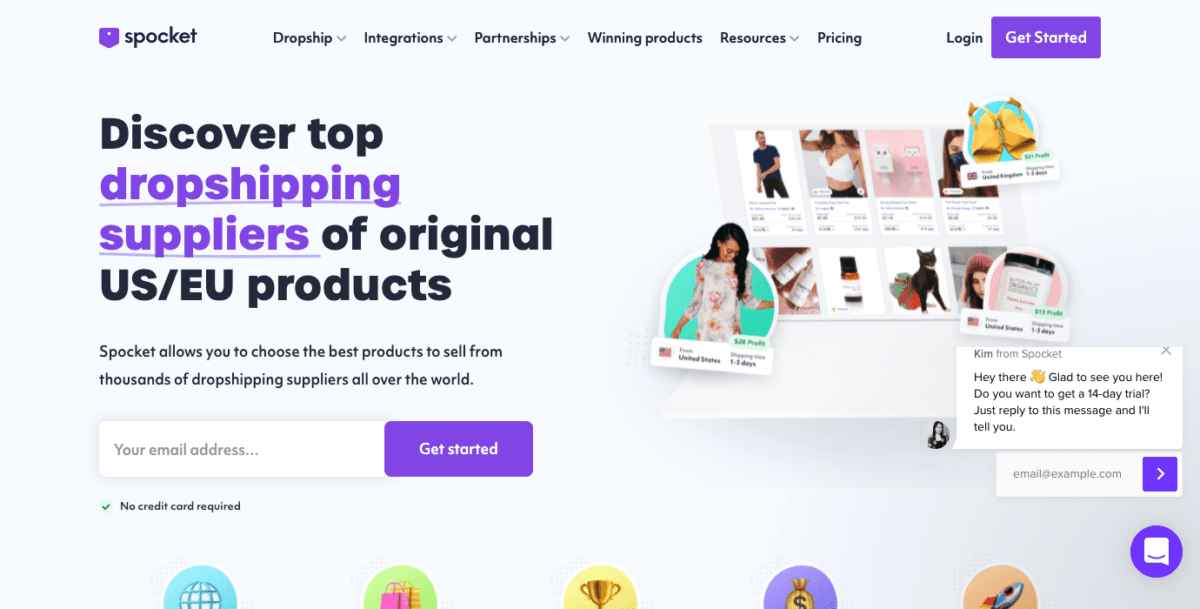
Used by over 60,000 merchants worldwide, Spocket is a dropshipping supplier platform that connects online sellers with millions of fast shipping products from US & EU suppliers across various product categories.
In 2021, Spocket was named one of the fastest-growing companies of the year in Canada, and SaaSworthy placed it amongst the “Top 10 fastest growing Software” and “Top 10 most popular software” lists for dropshipping.
Spocket aims to streamline and enhance the dropshipping process by providing:
- Access to a huge range of winning products with fast shipping and discounted retail prices
- Automated inventory synching and order processing
- Branded invoicing that allows you to put your store’s logo and a personal note to help you create brand loyalty with your customers
…allowing you to launch a drop shipping business within a few clicks!
Spocket offers integration with all major ecommerce platforms such as Shopify, Wix, Squarespace, BigCommerce, WooCommerce, and Ecwid. This allows retailers to import products and automate the processing of customer orders seamlessly.
All of the suppliers on Spocket provide pre-negotiated discounts as Spocket’s team has pre-vetted them. So you can rest easy knowing your customers will receive products from reliable dropshipping suppliers.
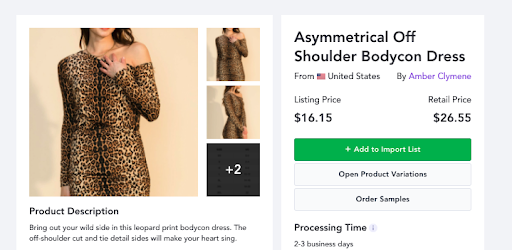
If you’re unsure about the quality of the products and/or thinking of taking your own photos for your products, Spocket provides the option to order samples from tens of thousands of suppliers.
Say goodbye to month-long waits as Spocket focuses on bringing suppliers who can provide faster shipping. Each supplier must adhere to Spocket’s processing time, prove they’re a real business, and provide a live CSV feed. They’re also obliged to offer a flat shipping rate and offer domestic and international delivery tracking.
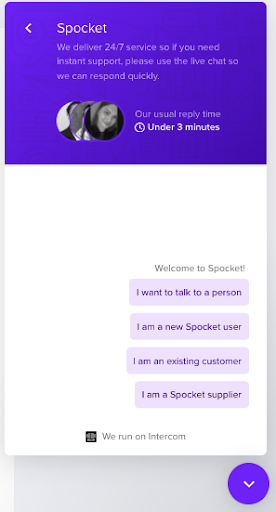
Spocket provides 24/7 customer support and instant chat functionality because online stores never sleep! Spocket’s online ratings speak for themselves, as retailers can build a powerful brand that provides answers faster for their customers. With intense competition in the ecommerce industry, a dedicated support team really makes a difference in setting your business apart from your competition.
This isn’t something to downplay. As many as 84% of ecommerce retailers say finding and securing suitable suppliers is the biggest obstacle to getting their business started. Spocket also ensures merchants enjoy some of the best profits dropshipping offers. Standard profit margins sit at around 15% to 20%, whereas the average Spocket user generates between 30-60% on their products.
Of course, exact numbers depend on your ability to create a premium customer experience that commands those higher prices. However, the takeaway is clear: using Spocket, generating higher profits with dropshipping is doable.
If you’re new to selling online, before delving in headfirst, there are a few foundational steps to consider when becoming a dropshipper:
Find a Niche
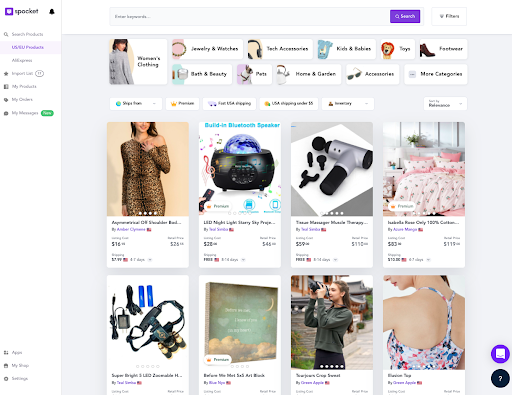
Platforms like Spocket make it easy to get carried away browsing their search page with many dropshipping products. Here, the temptation is to add any item that strikes your fancy onto your dropshipping store.
Don’t fall into that trap.
To increase the chances of running a successful online business, you need to establish your target customer. Then, curate a product catalog specifically tailored to their wants and needs.
To hit the ground running with a dropshipping business, ask yourself which niches interest you? After all, sustaining a company for years to come is easier if you’re passionate and knowledgeable about your niche. Not to mention, when it comes to building a unique brand, authenticity is critical – 86% of shoppers prefer authentic, honest brands on social media. Sell products where you can showcase a genuine passion for your niche and then find the best suppliers for them.
Once you have a few niches in mind, it’s time to validate your winning product ideas and target market. For the uninitiated, ‘product validation’ refers to the process of confirming whether there’s a demand and profit to be made from a potential niche.
It’s essential to find a competitive niche that isn’t over-saturated in the dropshipping market but still garners enough consumer demand. In light of that, research should involve thorough keyword searches that tell you how many people have recently looked for similar products. This can be done using free software like Google Keyword Planner. It’s also worth using Google Trends to see how many people have shown an interest in your niche over time and whether there’s an uphill trajectory of interest.
Sometimes, the more specific your niche, the better your chances. Namely, fewer competitors rival you, empowering you to become one of the few merchants catering to highly engaged customers. Think of it like being a big fish in a small pond. Take Indestructible Shoes, for example. This site targets customers with a specific issue: Providing safe yet stylish work shoes. It’s doing exceptionally well for itself, averaging about one million visits per month!
Create an Online Store
Once you’ve settled on a niche, it’s time to create your online store. Spocket, fortunately, integrates with all the major ecommerce solutions, including:
The above solutions provide the tools to create and customize your online storefront without coding knowledge. Even beginners can choose a theme, tweak it, and populate their stores with custom content. That said, it’s worth doing some digging to decipher which platform best suits your needs. For instance, if you’re looking for vastly scalable solutions with huge suites of ecommerce features, Shopify, WooCommerce, and BigCommerce are the best contenders.
Build a Brand
When creating your ecommerce store, carefully plan your brand and customize your site accordingly. After all, a solid and consistent brand is more recognizable and helps build customer loyalty.
Your brand’s values and personality should reflect across your entire website, including your:
- Domain name
- Tone of voice
- Logo
- Color scheme
- Photography
- Typography
And, of course, the products you display and sell should form part of that vision.
How Much Does It Cost to Start Dropshipping With Spocket?
Before you can start dropshipping, you’ll also need to consider your budget. Although dropshipping doesn’t require upfront inventory or warehousing costs, there are expenses associated with website creation. Generally speaking, no matter your business model, you have to invest a bit of money to make money.
Interestingly, successful Spocket seller, Mark Chapon, created a dropshipping business that made $178,492 in three months and broke even after investing $1,000 on Shopify and Spocket accounts and Facebook advertising.
Website Costs
Website costs largely depend on which platform you choose. Many ecommerce platforms offer different pricing plans, the more expensive of which unlock more features, which might be vital for expansion.
To name an example, you can get started with Shopify for $29 per month. Of course, “free” platforms are also available. For instance, thanks to their open-source nature, WordPress and WooCommerce are free to install. However, you’ll need to organize and purchase your own domain name, hosting, and security.
Domain names generally start at around $10 per year. Web hosting features to look out for include: high bandwidth and storage, over 99% uptimes, access to widespread content delivery networks, analytics reports, and intuitive dashboards.
Spocket’s Free and Premium Plans
With your online store ready to populate with products, you’re ready to sign up to Spocket. Spocket dropshipping comes with a free plan that allows you to browse Spocket’s catalog of US and European products, as well as access to 24/7 support via email and instant chat.
Then, when you’re ready to upgrade from Spocket’s freemium version, there’s a selection of premium plans to choose from. These come with additional perks like access to Spocket’s winning products and discounted items that allow for a better profit margin. Pricing for these plans ranges from $24.99 to $99.99 per month. Alternatively, you can opt for annual billing to get up to eight months of complimentary subscription.
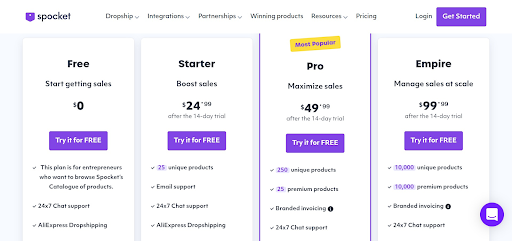
Sample Products
We recommend ordering sample products before selling your chosen Spocket products. Aside from quality assurance, you can manage your own photography consistent with your brand with product samples in hand.
High-quality product photos will elevate your business above the rest. In fact, 75% of online shoppers rely on product photos to make buying decisions, and good visual content is 40% more likely to be shared on social media.
We’ll go into more depth about how to order product samples on Spocket, but keep in mind you’ll need to pay the base product price for your samples. Spocket requires its suppliers to offer a minimum 25% discount off of the retail price.
Still, needless to say, if you’re selling loads of different products, this can quickly amount to a sizable investment. For example, say you’re looking to sell dresses with a $15 base price. Sampling ten such products would equate to $150 right off the bat. This doesn’t include potential shipping costs that would further increase the price.
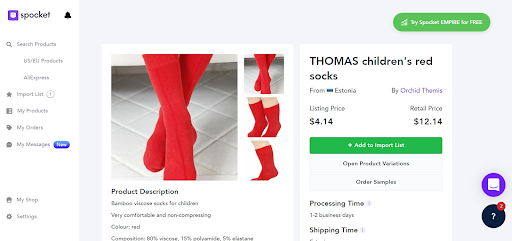
Marketing
You need to invest in a marketing strategy to get your products seen by the right people. Facebook ads are one such way – but unfortunately, the US’s average cost per thousand impressions sits at $7.34, which can get pretty pricey.
You may also need to purchase third-party plugins to:
- Improve your site SEO: WordPress’s most popular SEO plugin is Yoast, its premium version available for $99 per year.
- Create popups for your website: PopUpSmart has a free plan, including a single popup. After that, pricing starts at $290 per year.
- Create loyalty schemes or affiliate programs: For example, Sumo Rewards is available for WooCommerce for a $49 single site license.
- Create an automated email marketing strategy: Many options are available, including MailChimp, Sendinblue, ActiveCampaign, and Constant Contact. MailerLite is one of the more affordable solutions with a free plan and premium pricing starting at $10 per month for 1,000 contacts.
- Capture leads: WP Forms is one of the most famous lead capture plugins for WordPress and starts at $39.50 per year.
Of course, these are just a few of the many ways you could spend money marketing your products. The takeaway is clear: these costs can soon rack up.
Our advice is to make a list of the features your chosen eCommerce platform lacks so you know which plugins to add. That way, you’ll get a more accurate idea of future costs.
How to Get Started with Spocket
Getting started with Spocket is quick and easy. Simply sign up for a free account on Spocket.
If you already have a website, e.g., Shopify, you can connect your Shopify store within the Spocket dashboard.
Once you’ve linked Spocket to your ecommerce store, it’s time to import some winning products!
Browse The Catalog
Spocket offers thousands of products across a wide variety of categories, including:
- Bath and beauty
- Jewelry and watches
- Kids and babies
- Men’s and women’s clothing
- Tech accessories
- Toys
- Pets
- Footwear
- Accessories
- Automotive
- Bags and wallets
- Festivals and parties
- Gifts
- Sports and outdoors
- Home and garden
- Seasonal
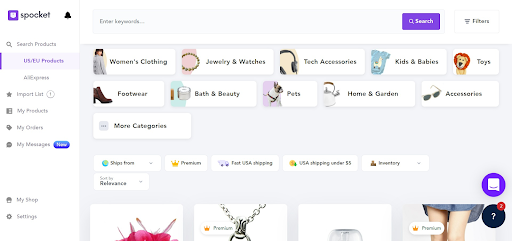
There’s also a “trending” category that lists products with upwards sales trends, and with Spocket’s premium plans, you unlock access to bestselling and discounted products. The more expensive the plan, the more premium products you can add to your store.
You’ll find these “premium products” as you browse the catalog. They’re marked with a premium logo on the bottom left of the product image. Alternatively, you can search these products by checking the Premium filter.
On a similar note, when searching for products in general, you can do so by name, product category, or filter by location and price.
Pro Tip: When choosing products to sell, consider supplier location, which may influence shipping times and prices. The majority of Spocket’s suppliers are based in the US and EU. Still, you’ll also find several global suppliers available.
Vet Suppliers
One of Spocket’s major strengths is that every supplier is vetted and rated based on their processing and shipping times and product quality. This should bring up their profile page, where you can review the supplier’s refund and return policies. This can massively impact the quality of your customer experience, so be sure to check this info before settling on a supplier.
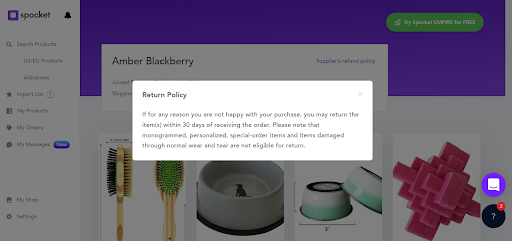
Order a Sample
Navigate to the product you’re interested in and click “Order Samples” in the product description to order a sample. You can choose how many samples you wish to order (up to five) in the following popup and review how much this will cost (including shipping).
Add Products to Your Store
Once you’ve decided a product is right for your store, importing it is easy.
Drag your cursor over the product you’re interested in, and a green bar saying “Add to import list” should appear. Your import list includes all the products you’ve selected in this manner, enabling you to review your choices before making them live on your website.
At this point, you can modify product details, including:
- Product name
- Product type
- The collections the product(s) will be a part of
- Product tags
- Product images
- Variants (sizes, colors, etc.)
- Profit margin
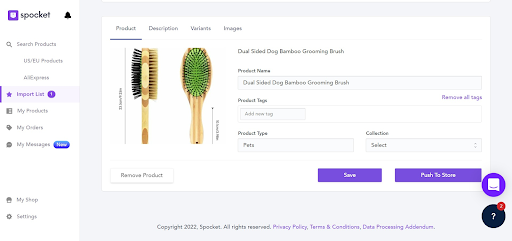
Pro Tip: Consider how you’ll handle shipping costs. You’ll likely need to set higher profit margins if you offer free shipping.
Spocket allows you to set a markup percentage, which automatically applies to all your Spocket products. You can create global pricing rules by navigating to “Settings” in the lower-left corner of your dashboard. Then, select the “Global pricing rules” tab. Here, you can decide on a default markup for all new products added to your import list.
Once a product is ready to go live on your store, click the “Push to Store” button.
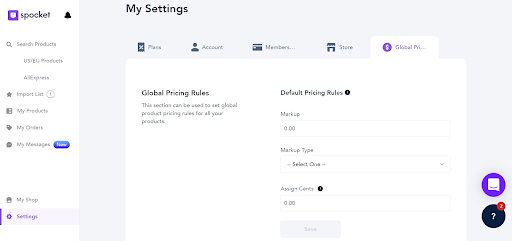
Create Branded Invoices
Navigate “Settings” and select “store” from the tabs to create branded invoices. From here, you can update your store’s email, phone number, store’s logo, and add a personal note.
Please note: Spocket’s branded invoicing feature is only available with paid subscriptions, and not all suppliers support branded invoicing.
Start Selling
Now that you’ve finished all the initial setup of your store, it’s time to start selling! Utilize the marketing tactics discussed above, and be on your way to creating a successful online business!
Fulfill Orders
Once you receive an order from your customer, head back to Spocket, where you can simply execute a one-click checkout to fulfill orders. Your suppliers will immediately take care of the order fulfillment so you can sit back and watch your customer receive their orders. You can track your order’s progress on the “My Orders” page on Spocket.
We hope you enjoyed our Spocket dropshipping guide. In short, Spocket is an intuitive platform that makes it easy for retailers to pick and choose a vast range of products from fast shipping dropshipping suppliers and add them to their stores. You can start selling online without purchasing and stocking inventory. In theory, if you already have an online store set up and ready to go, sourcing and adding Spocket products could take only minutes.
Let us know in the comments below if you’re going to take the leap and launch your own dropshipping business.




